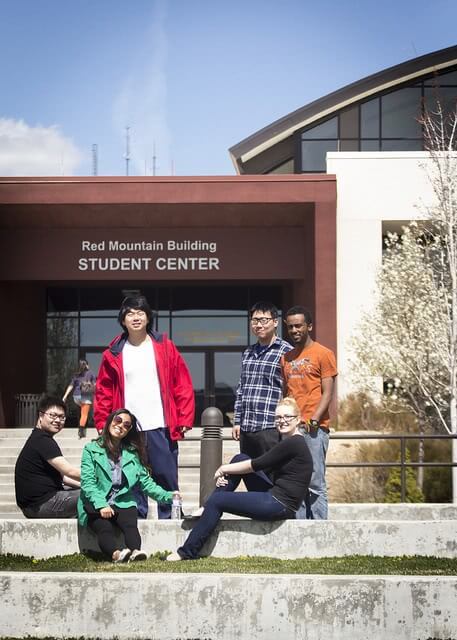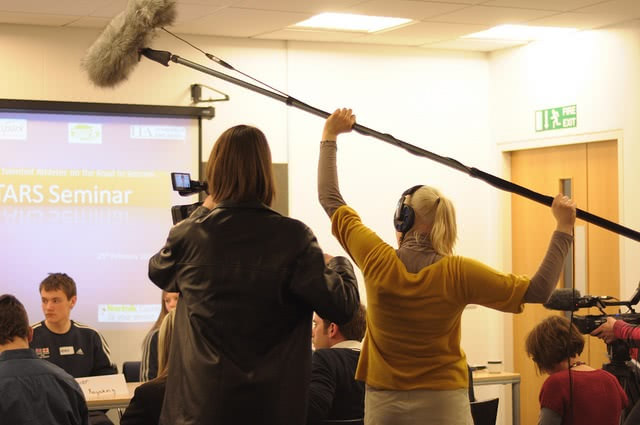
Flickr user Truckee Meadows Community College
2 plus 2 college programs involve splitting up your four college years between community college and a public or private college or university. You spend the first two years in a community college and then transfer to a public or private college where you complete your next two years. There are several compelling reasons why a large number of students choose this option. However, there are also a few downsides to choosing this transfer route.
Understanding the pros and cons of the 2+2 college program will help you decide whether this is the right choice for you.
Pros of 2 Plus 2 College Programs
You will graduate with less debt
Tuition fees at any traditional 4 year college are expensive. Most students can only afford to attend college by taking on student loans. That means they spend the next few years after graduation paying back their debt.
The 2+2 program can help soften the blow significantly. Community college is much cheaper to attend than any 4-year college. By earning general education credits at a community college and then transferring into a 4-year institution, you save a lot by paying lower tuition fees during the first two years. This means you will graduate with less debt and will be able to pay back your loans much faster than students who complete their college education through the traditional route.
You get more flexibility
Class schedules are more flexible in community colleges. There are also many more night classes that students can choose from. This can be particularly useful if you have other personal commitments that do not allow you to attend classes during regular school hours. Instead of foregoing college completely, you can get an education and still fulfill your other obligations.
A flexible schedule and night classes also allow you to take up a day job so you could work and save money for the next 2 years in university.
You get the opportunity to explore different majors
The 2+2 program is an excellent solution for anyone who is not sure about what they want to study. When you are still undecided about your major, paying those high tuition fees can be a scary thought. You can change your major at any time but it will cost you. It is easier and cheaper to explore and change majors in community college.
It’s a chance to boost your academics
Your high school grades are one of the first things that admissions authorities look at when assessing applications. If your grades are good enough, they will then go on to assess the other components of your application. However, if your grades are sub-par, that can be a blow to your odds.
If your high school grades are not impressive enough to help you stand out from the other applicants, attending community college for two years gives you another opportunity to boost your academic record. When you apply to college as a transfer student, the college authorities generally look at your transfer application and college scores. Your high school test scores are less important.
Working hard during those two years in community college will help to strengthen your college application. It also boosts your chances of getting admission into a college of your choice.
It gives you time to adjust
Not everyone finds it easy to move overnight from home to a college far away. If you are not ready to go off to a 4-year school, attending a community college close to home for the first two years can make the transition to college easier.
It’s an excellent solution for adult learners
Community college offers several benefits for adult learners.
If life got in the way and did not allow you to attend college right after high school, diving straight into a 4-year program can quickly get daunting. 4-year college programs can be rigorous and require a huge time commitment. This can be especially difficult if you are already juggling home responsibilities and work. The flexible schedules and options for attending night classes make it easier to balance personal and academic life without getting overwhelmed.
Cons of 2 Plus 2 College Programs
The curriculum is limited
Community colleges offer a limited curriculum. In most cases, you will have a choice of general education classes and classes that focus on specific careers such as hospitality management, automotive repair, and medical technology. If you are not interested in the careers that the community college covers, you will either have to compromise and settle for 2nd or 3rd choice. Or, you will have to forego the 2+2 program entirely and start at a 4-year school straight off.
Admission rates are generally lower for transfer students
Colleges give preference to high scoring high school students. While this does not mean that all transfer students will find it difficult to get admission, studies show that the admission rates for transfer students is slightly lower than the admission rates for high school students.
Scholarships are limited
There aren’t as many scholarships for transfer students as there are for high school students which means you will be missing out on opportunities to get some free money for college.
The workload is lighter
A lighter workload may seem like a benefit, especially if you are juggling several personal and work commitments. However, it may not fully prepare you for the amount of work required to handle the course work at a 4-year school.
Is The 2+2 Program For You?
The 2+2 program may be right for you if you want to save money on college tuition. Or, if you are looking for a more flexible schedule that allows you to balance all your responsibilities.
The 2+2 program is also a great option if you need to boost your academic scores. Or, you are looking for a way to ease the transition of leaving home and going off to a 4-year college.
Use College Raptor to discover personalized college matches, cost estimates, acceptance odds, and potential financial aid for schools around the US—for FREE!





